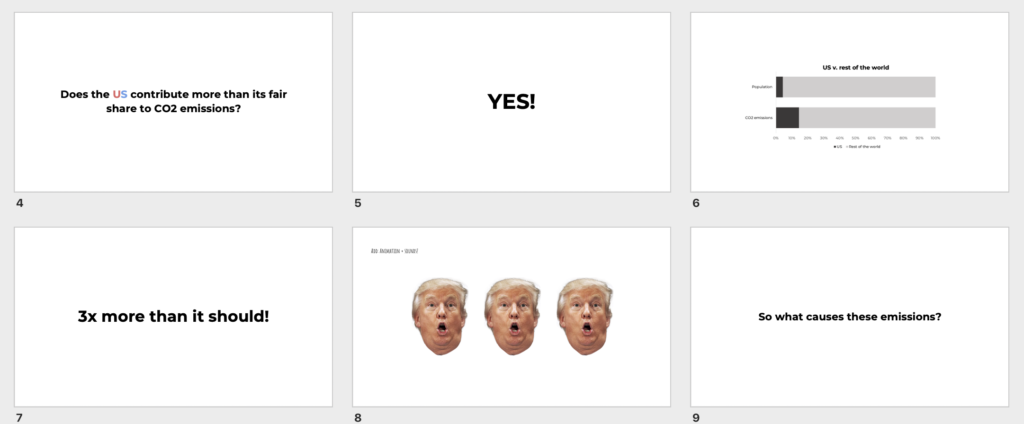The Anti-Lobby Lobby Club
Reason #457 to vote blue: CO2 Emission economics
Neil Pendse | Sarah Mousa
The data say that 1) energy companies are major contributors to CO2 emissions and 2) that lobbyists tied to these companies pay exorbitant sums to American politicians, with peaks in spending tied directly to moments where there is critical legislation at stake. We want to tell this story because we believe that young American voters who care about climate change have the ability to change this, but need to know about it first.
The process
We started this process by exploring global World Bank data on key drivers of carbon dioxide emissions. On learning that electricity and transport are leading global causes, we were curious as to how this dynamic played out in the United States and why it is able to continue despite strong discourse surrounding climate change. We suspected that while there may be progress on individual levels and awareness around how our personal consumption choices may impact climate change, that the large-scale drivers of the problem was really industry with too high a vested financial interest to divest from its current production approaches. A symptom of this high vested interest is how much these companies are willing to spend to protect their business activities–hence our interest in lobby spending. We were surprised by the intensity of spending by electricity companies and how neatly these lined up with mainly Republican candidates. We came across many articles that showed how lobbyists spent money prior to critical voting periods, and how that directly blocked legislation that would limit their activities–and ultimately limit CO2 emissions. We do not believe the voting public is generally aware of this and opted for a more optimistic approach where we assume elections, and the electorate, have the power to change the status quo.
The construction of a narrative, format, and aesthetic style revolved around our target audience. We decided on young voters because although they are more likely to believe in the importance of tackling climate change, they tend are not turning out to vote as needed. That decision meant that we needed an engaging approach fit for a generation notorious for its short attention span.
Who we are
A cheeky social media platform motivating young, educated populations to vote by demonstrating the tangible impact of their voice using data.
Our target audience
American voters between the ages of 18 and 30. Our followers are predominantly students or young professionals with university degrees. We focus on this demographic with the aim of getting out the vote, especially in key states. Our audience is generally left-leaning and will have some awareness of the issues we are addressing, but may not be fully aware of the extent to which these issues are directly fueled by politics and can be changed.
Our format
We have created a series of Instagram stories that our followers can click through to learn why companies continue to get away with high levels of CO2 emissions in the United States. In addition to a series of Instagram stories, we will also turn this into an animated video that can serve as a more permanent post on our Instagram page.
Our narrative and aesthetic style
We cater to our audiences. The narrative is quick, back-and-forth, and clickable. We do not want to lose the audience’s attention. Aesthetically, our work is minimalistic and contains bits of share-worthy humor.
Data Sources and Inspiration
[a] https://data.worldbank.org/indicator/EN.ATM.CO2E.KT?end=2014&locations=US-1W&start=1960&view=chart [b] https://www.worldometers.info/world-population/population-by-country/ [c] https://www.epa.gov/ghgemissions/overview-greenhouse-gases#carbon-dioxide [d] http://shrinkthatfootprint.com/greenest-electricity-source [e] https://link.springer.com/article/10.1007%2Fs10584-018-2241-z [f] https://www.opensecrets.org/industries/contrib.php?cycle=2020&ind=EInspiration: https://www.bloomberg.com/graphics/2015-whats-warming-the-world/
